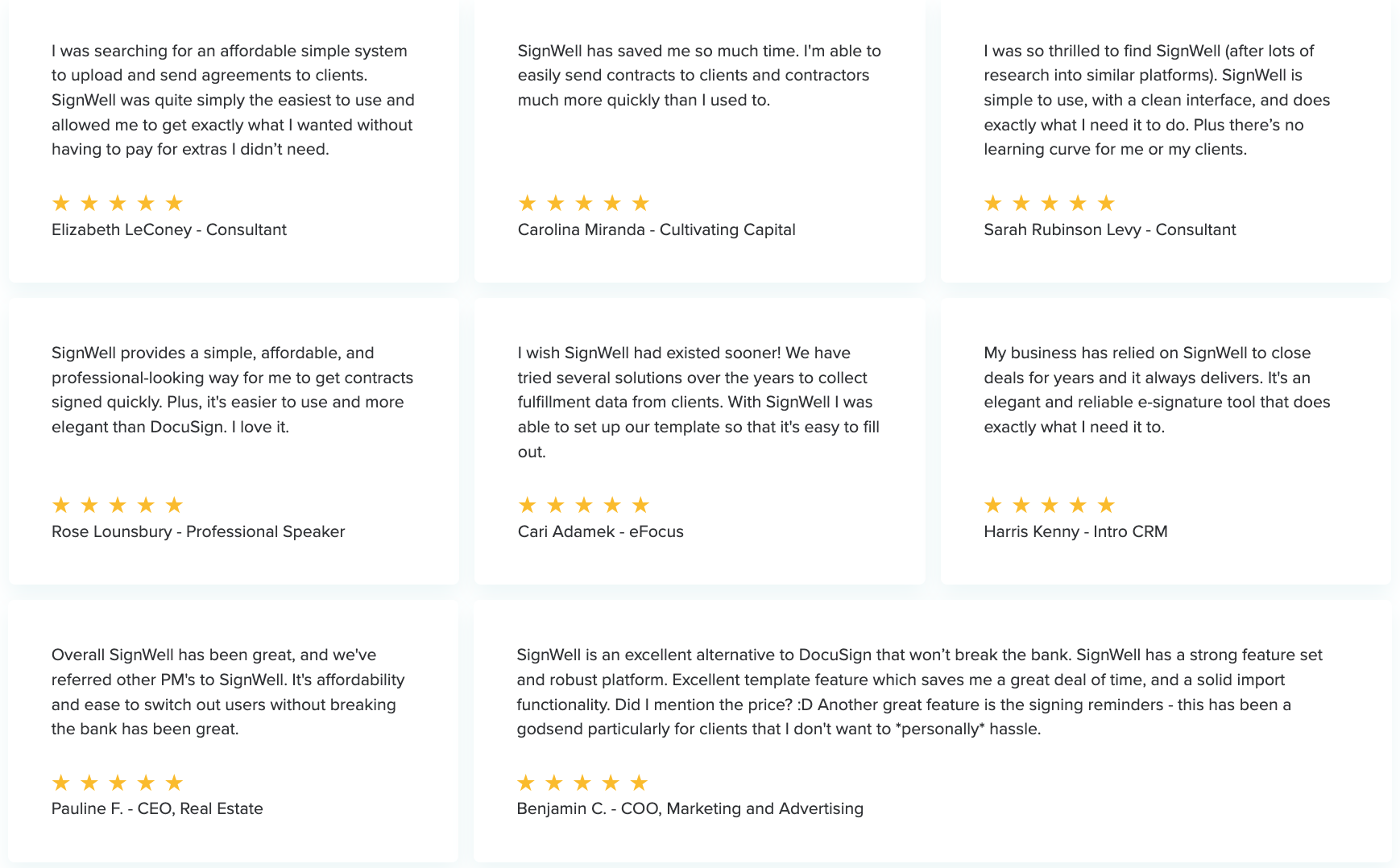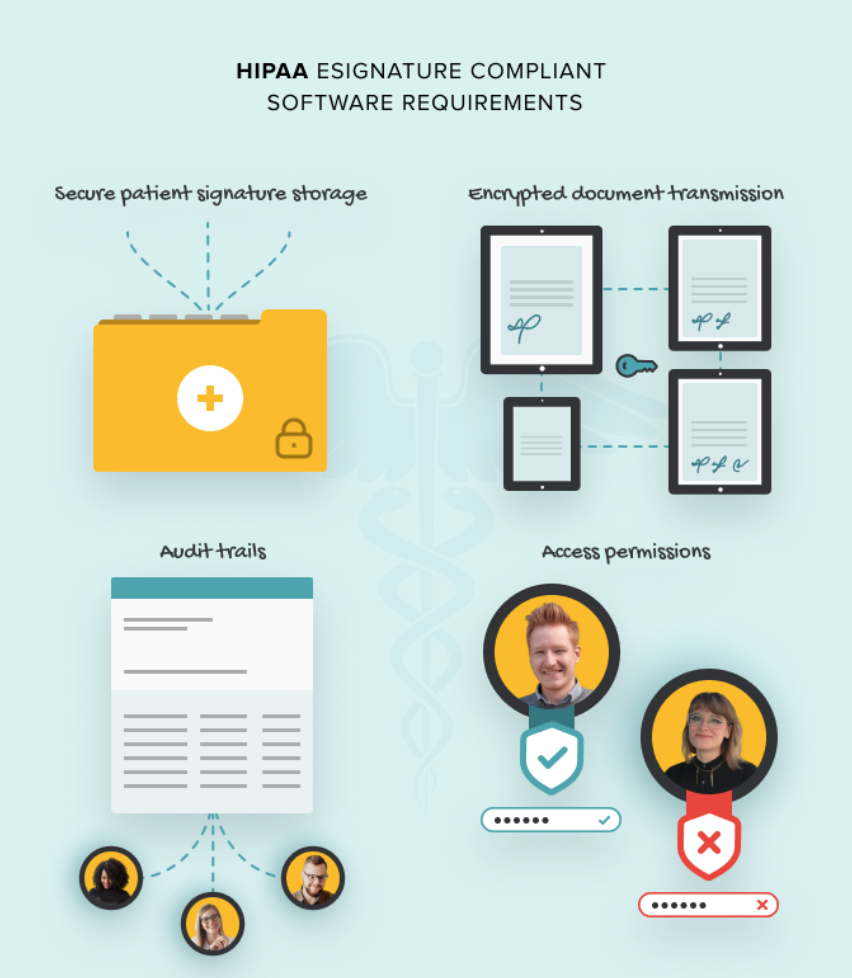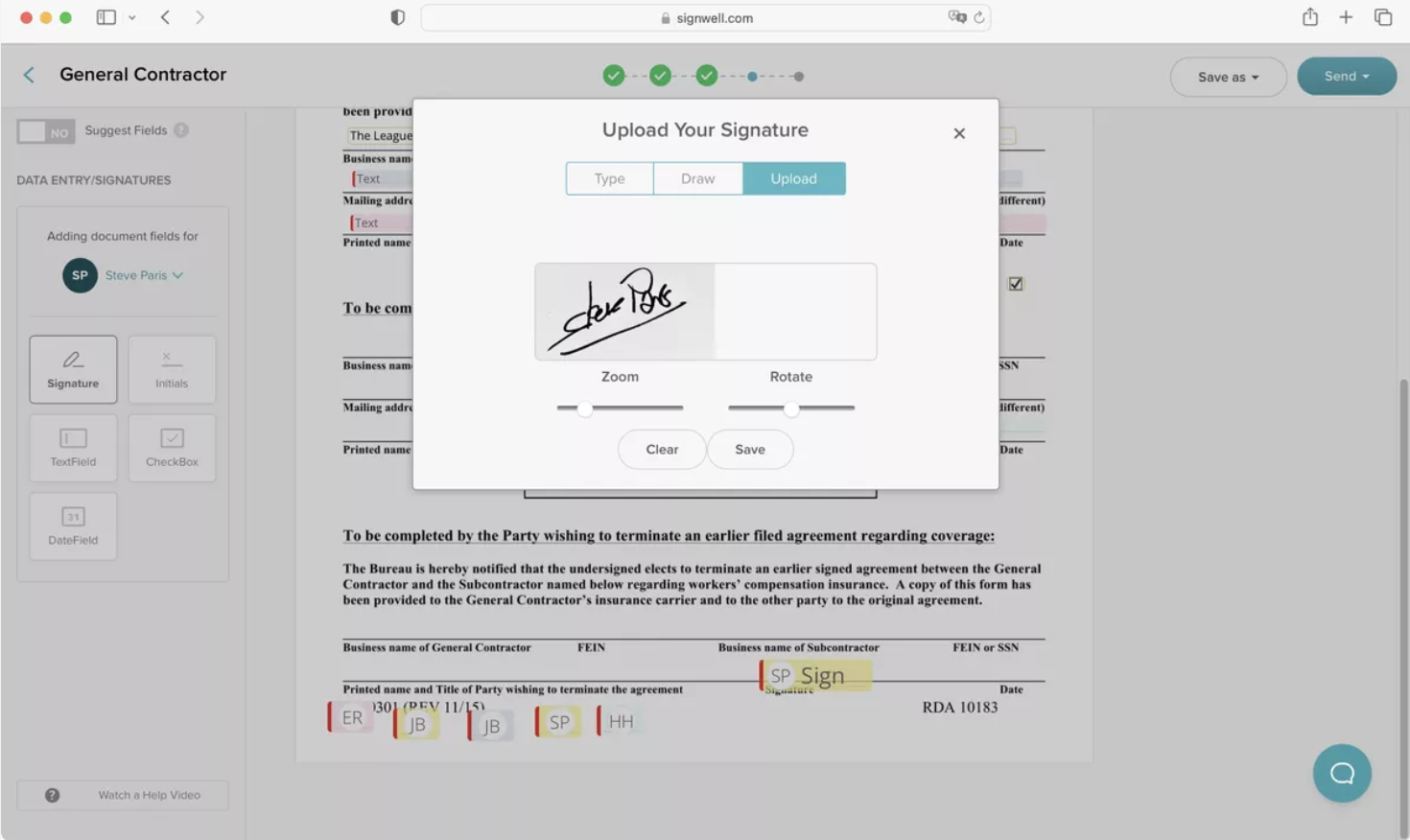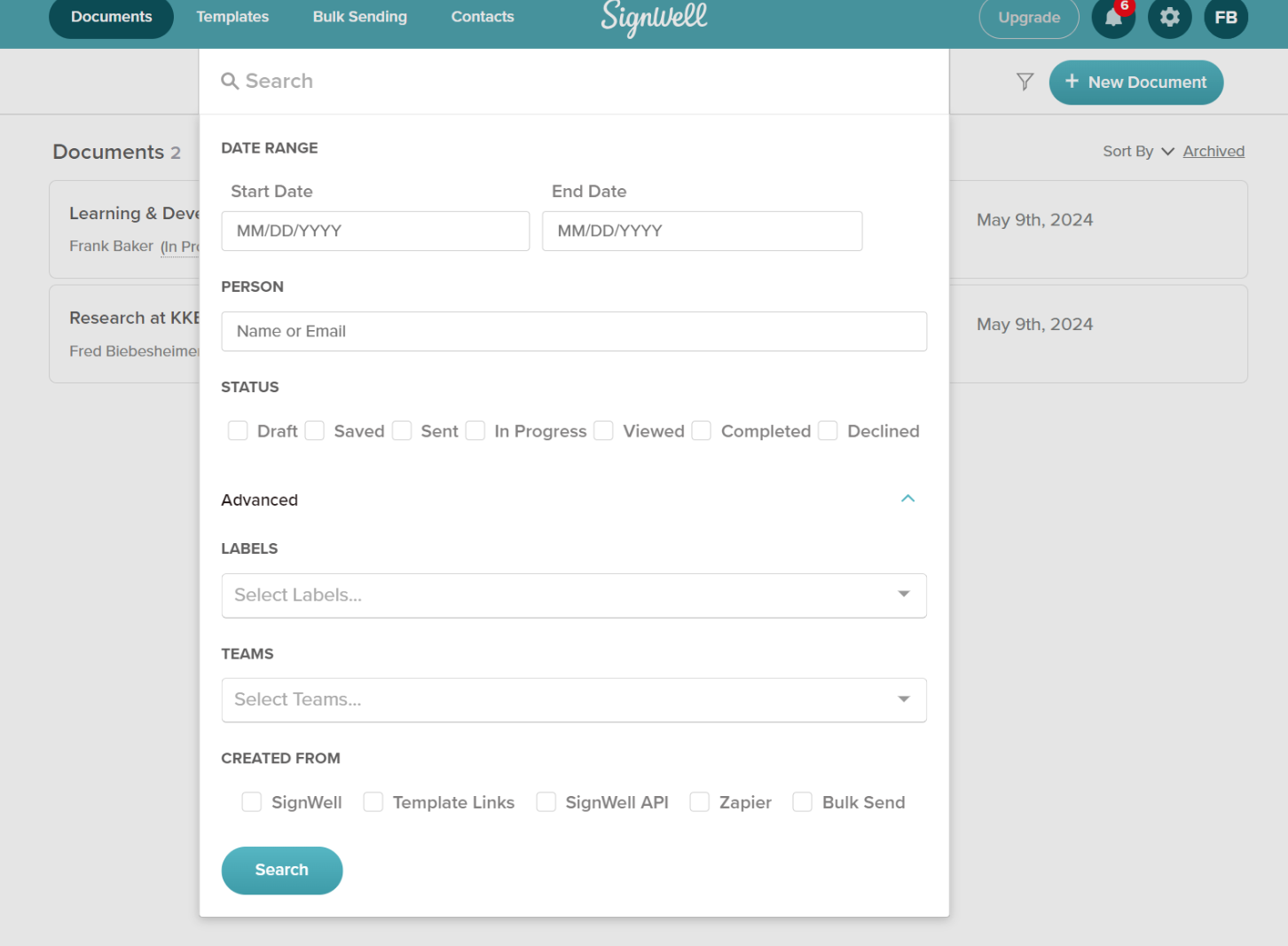Quick Summary
This article outlines the benefits of electronic signatures in healthcare, including improved efficiency, cost reduction, enhanced security, and better patient experiences. It emphasizes quick implementation tips, such as selecting the right solution, training staff and patients, and ensuring system integration.
By adopting e-signatures, healthcare organizations can optimize workflows, reduce paper usage, support sustainability goals, and maintain regulatory compliance. Explore our resources for more insights on the benefits of electronic signatures.
Want to Learn the Benefits of E-Signing in Healthcare?
Electronic signatures have become increasingly essential in healthcare, offering a modern solution to age-old administrative challenges. The U.S. healthcare system has the potential to save billions annually by automating repetitive tasks, and solutions like e-signatures can enhance efficiency and improve patient experiences in the process. As healthcare organizations seek to innovate and refine their processes, understanding the benefits and implementation strategies for electronic signatures is crucial for success.
This SignWell article discusses six benefits electronic signatures bring to healthcare and key considerations when implementing e-signing for healthcare.
Why Listen to Us?
At SignWell, we have built a successful platform to streamline workflows, reduce costs, and ensure compliance with healthcare regulations like HIPAA. Thousands of users across various industries trust us, and we have numerous success stories from clients who have improved efficiency, reduced errors, and enhanced compliance by switching to electronic signatures.

6 Benefits of Electronic Signatures in Healthcare
1. Improved Efficiency and Workflows
E-signatures reduce the time to complete administrative tasks like signing consent forms, medical records, and contracts, leading to quicker processing. Before adopting e-signatures, the average turnaround time for document signing in healthcare varied significantly depending on the document type and facility. For instance, analyzing how long it takes to collect signatures on consent forms can help healthcare teams optimize workflows and set expectations for future document handling, making the entire process more efficient.
By removing manual signing processes, healthcare providers can make quicker decisions, improving patient outcomes and reducing wait times.
2. Cost Reduction
Electronic signatures in healthcare contribute significantly to cost reduction, offering immediate and long-term financial benefits for healthcare institutions. Here’s how:
- Decreased expenses on paper, printing, and physical storage
The average cost of handling a paper document, including printing, archiving, and secure disposal, can reach up to $3.63 per sheet.
E-signing eliminates the need to print forms, consent documents, and medical records. Paper consumption can be reduced dramatically, and printing costs, including toner and printer maintenance, are substantially lowered. This simultaneously minimizes physical storage requirements and frees up precious space for patient care or other income-generating activities.
- Savings on admin labor costs
Staff spending less time on paperwork enables them to focus on higher-value tasks. Document retrieval is almost immediate through automated workflows, cutting down on administrative overhead and eliminating the necessity for manual searching through physical files.
A McKinsey study estimated that automating repetitive administrative tasks, such as document signing, could save up to $175 billion annually in admin costs across the U.S. healthcare system.
- Long-term financial benefits for healthcare institutions
E-signatures have the potential to speed up reimbursement cycles, boost revenue, and improve operational efficiency. By optimizing processes such as patient intake, clinical trial documentation, and compliance reporting, healthcare institutions can reduce administrative costs and increase profitability.
3. Improved Patient Experience
Integrating digital solutions for document signing minimizes the time spent on paperwork; for example, patients can complete and sign forms from their own devices. This reduces the time spent on paperwork, enabling faster processing of patient information, lab orders, and consent forms for a more efficient overall patient experience. These improvements in administrative speed allow healthcare providers to serve patients more quickly.
Electronic signatures also enhance accessibility for patients with disabilities or limited mobility. The option to review and sign routine paperwork from anywhere eliminates the need to handle paper forms physically or travel to a healthcare facility.
4. Enhanced Security and Compliance
Electronic signatures facilitate compliance with regulations like HIPAA, GDPR, and eIDAS, which require strict protection of patient data and personal information.
E-signature solutions like SignWell come with built-in compliance features, ensuring document handling and storage meet the stringent requirements of these laws. For example, because we are HIPAA-compliant, we offer secure methods for collecting and storing protected health information (PHI).
Enhanced data protection through encryption is a crucial feature of electronic signature systems. It safeguards sensitive patient information from unauthorized access and potential data breaches.
SignWell employs advanced encryption methods, such as AES-256 encryption for data at rest and Transport Layer Security (TLS) protocols for data in transit, to protect sensitive information robustly.

Electronic signatures significantly improve the secure storage and retrieval of patient information. Their centralized, cloud-based storage systems with solid security measures offer easy document retrieval while maintaining strict access controls.
SignWell’s audit trails are automatically generated, recording when documents are opened, received, and signed, providing comprehensive oversight of the agreement process.
For those who may be slightly apprehensive about signing online, our embedded signatures allow them to sign documents directly within a healthcare provider’s familiar website or app, enhancing comfort and trust in the e-signing process.
5. Better Document Management
- Centralized and organized digital storage of patient records
Centralized and organized digital storage of patient records is a major benefit of e-signature systems. Patient documents are stored in a secure, cloud-based repository, eliminating the need for physical storage spaces.
Digital centralization allows healthcare providers to maintain a comprehensive and well-organized archive of patient information accessible from any authorized device.
- Easy retrieval and sharing of medical documents
Electronic signatures greatly enhance the easy retrieval and sharing of medical documents. Healthcare professionals can quickly search for and access specific patient records using various identifiers, such as name, date of birth, or medical record number.
This rapid retrieval improves patient care efficiency by saving time. Additionally, sharing documents securely with other healthcare providers or specialists becomes a seamless process, facilitating better collaboration and continuity of care.
- Reduced risk of lost or misplaced paperwork
Another significant advantage is the reduced risk of lost or misplaced paperwork. Electronic signatures and digital document management eliminate the chances of physically misplacing or losing vital patient records.
All documents are securely stored in the digital system, reducing errors and ensuring that critical information is always available when needed. This improves patient care and helps healthcare organizations comply with record-keeping regulations.
6. Reduced Environmental Impact
Electronic signatures in healthcare significantly contribute to reducing environmental impact in two key ways:
- Reduces paper usage
E-signatures significantly reduce paper usage in healthcare, contributing to environmental sustainability and operational efficiency. For example, organizations transitioning to electronic documentation and e-signatures can eliminate thousands of printed pages each month.
One healthcare institution reported saving 2.700 pages of paper per month after adopting e-signatures, which reduces paper waste and printing costs, resulting in financial and environmental benefits.
- Contributes to sustainability goals
Contribution to healthcare institutions’ sustainability goals is another important aspect of electronic signatures’ environmental impact. Many healthcare organizations set ambitious targets to reduce their carbon footprint and improve sustainability.
Electronic signatures play a crucial role in these efforts by:
-
- Reducing the need for physical storage space, which can be repurposed for patient care or other uses.
- Decreasing energy consumption associated with printing, scanning, and transporting paper documents.
- Minimizing the carbon emissions related to document delivery and courier services.
Adopting electronic signatures can help healthcare institutions make significant progress toward their sustainability objectives. They can demonstrate their commitment to environmental management while improving operational efficiency.
Implementation Considerations for Electronic Signatures in Healthcare
To ensure success and compliance, organizations must consider several key implementation factors when adopting electronic signatures in healthcare. Here are some quick pointers:
1. Choosing the right electronic signature solution
Choosing the right electronic signature solution is crucial for healthcare organizations to ensure HIPAA compliance, data security, and seamless integration with existing systems.
SignWell stands out as an excellent choice for healthcare, offering robust security features, HIPAA compliance, and a user-friendly interface that streamlines document workflows for staff and patients.
2. Training staff and patients on proper e-signature use
Training staff and patients on proper usage of e-signatures is essential for successfully implementing and adopting e-signing in healthcare settings. Training ensures that both healthcare professionals and patients can confidently navigate the new system, reducing errors and improving overall efficiency in document management.
With SignWell, half the battle is won—as we prioritize ease of use. By focusing on user-centered design and continuous usability testing, we offer streamlined workflows for document management, allowing users to easily create, send, and sign documents without unnecessary headaches.

Features like drag-and-drop functionality, customizable templates, and clear navigation simplify the signing process. Furthermore, we invest in continuous feedback loops for user insights to refine and optimize our platform’s interface. This evolving improvement process ensures our platform remains accessible to tech-savvy and non-technical users alike.
3. Ensure integration with existing healthcare systems
Ensuring integration with existing healthcare systems is crucial when implementing e-signing in healthcare to maintain continuity of care and avoid disruption to established workflows.
Smooth integration allows for efficient data sharing across different platforms, enhancing the overall quality of patient care. Moreover, it supports compliance with regulations and standards while maximizing the return on investment for healthcare organizations adopting e-signature technology.

SignWell offers seamless integration with existing healthcare systems through its robust API, allowing for easy incorporation into Electronic Health Records (EHRs) and other healthcare software.
Our customizable templates and automated workflows enable healthcare providers to streamline document processes within their current systems.
Additionally, SignWell is compatible with over 5,000 popular tools, including Salesforce and Microsoft Office. Thus, healthcare organizations can maintain their existing workflows while enhancing document management and e-signature capabilities.
Transform Your Healthcare Operations with SignWell’s E-Signature Solutions
Electronic signatures are revolutionizing healthcare operations, offering substantial benefits in efficiency, cost reduction, security, and patient experience. By adopting e-signatures, healthcare providers can streamline workflows, enhance compliance, and contribute to sustainability goals.
As the industry continues to evolve, embracing this technology is crucial for staying competitive and providing optimal patient care.
Ready to transform your healthcare organization with electronic signatures?
Sign up for SignWell today and experience seamless integration and secure, HIPAA-compliant e-signing solutions tailored for healthcare professionals.
Sign with a team that knows what you need.
Putting a signature on a document shouldn’t be hard. The SignWell mission? Simplify how documents get signed for millions of people and businesses.
Get Started Todaybusinesses served, so far...
total documents signed
customer support satisfaction